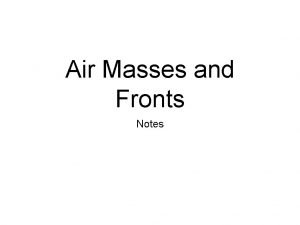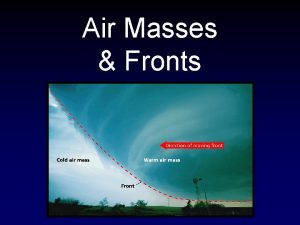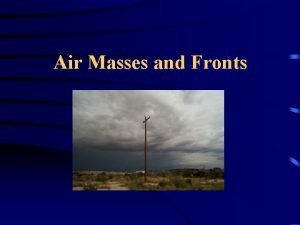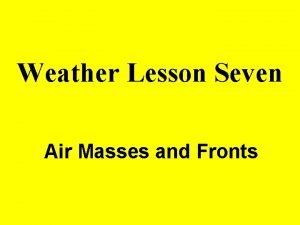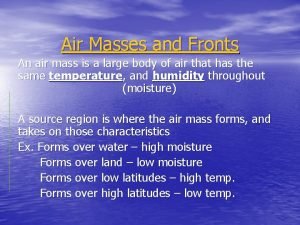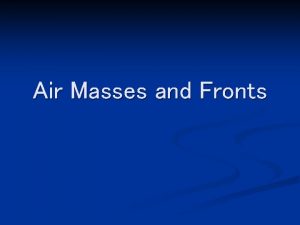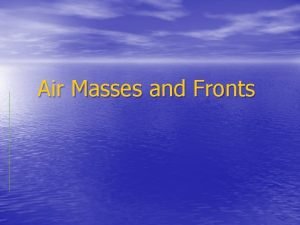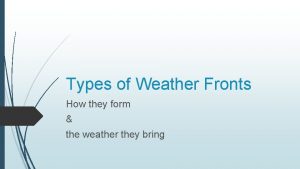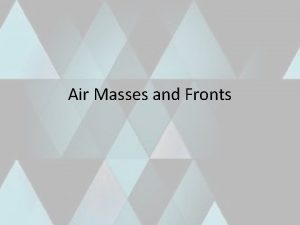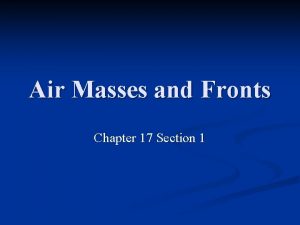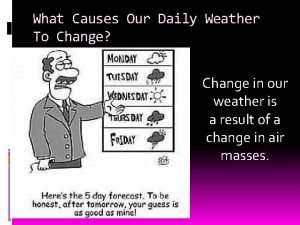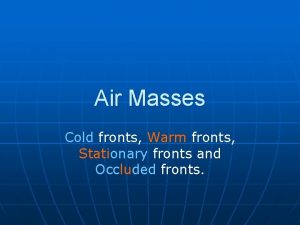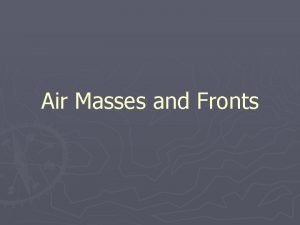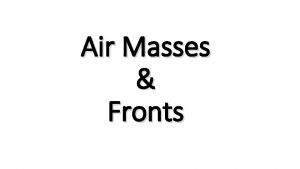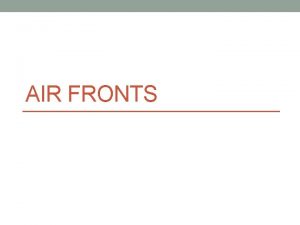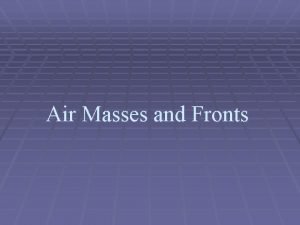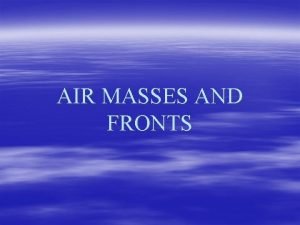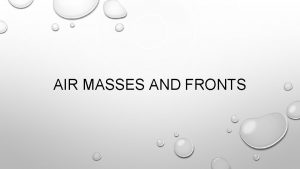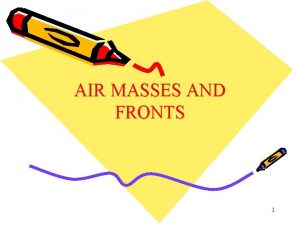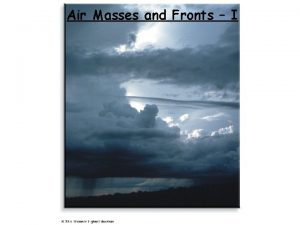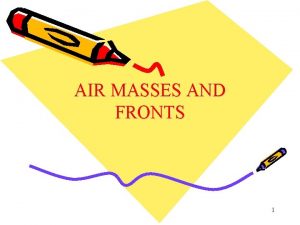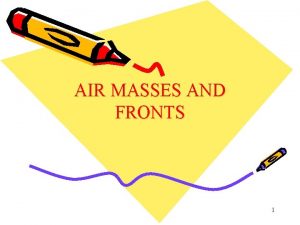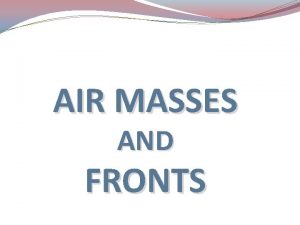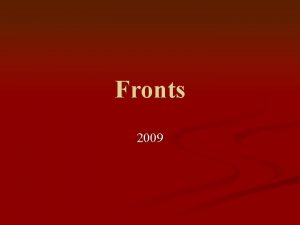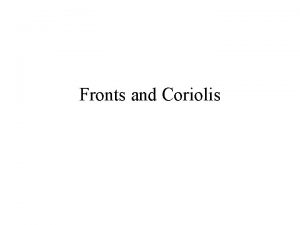Air Masses and Fronts Wind Wind is the


















- Slides: 18

Air Masses and Fronts

Wind • Wind is the movement of air from places of high pressure to places of low pressure • Wind moves in large masses called air masses – Air masses also move from areas of high pressure to areas of low pressure • These air masses retain the characteristics of where they form


Types of Air Masses • Air masses can be described in two ways • Moisture/Humidity • Continental (dry air) vs. Maritime ( moist air) – The moisture of an air mass depends on whether it forms over land or water. Temperature • Tropical (warm air) vs. Polar (cold air) vs. Arctic (coldest air) – The temperature of the air mass depends on whether it formed closer to the equator or closer to the poles

Putting it all together Continental Maritime Tropical: c. T Tropical: m. T Polar Continental Maritime Polar: c. P Polar: m. P Arctic Continental Arctic: c. A Knowing moisture and temperature, what would the characteristics be of… • Continental Polar (c. P)? • Maritime Tropical (m. T)? • Continental Arctic (c. A)?


Fronts • Front – the boundary between two different air masses • Along a front, warmer, less dense air is always forced upwards • 4 types of fronts – Warm – Cold – Stationary – Occluded

Warm Front • A warm front occurs when warm air slowly moves into an area covered by cooler air. • Takes a long time for warm air to displace colder air • Marked by long and steady rain • Red semi-circles are symbols for warm front



Cold Front • A cold front forms when cold, dense air quickly moves into an area occupied by warm air. • Compared to speed of warm front, cold fronts move very fast • Marked by heavy precipitation/thunderstorms for a short period of time • Blue triangles are symbols for cold front



Stationary Front • If fronts are not moving towards each other, but rather moving parallel, a stationary front occurs. • Mild precipitation can occur on a stationary front. • Red semi-circles on one side, blue triangles on other

Colder air Warmer air

Occluded Front • Cold fronts move faster than warm fronts • When an active cold front overtakes a warm front, an occluded front forms • This will force the warm front up into the air, which will lead to heavy rain • Usually marked by purple semi-circle and triangles in same direction


m. T c. P What air masses can be found moving in at each orange arrow? What is the weather like at the H and L?
 Mt air mass
Mt air mass How a warm front forms
How a warm front forms North american air masses
North american air masses North american air masses
North american air masses Two cold air masses converge on a warm air mass
Two cold air masses converge on a warm air mass Cold front air movement
Cold front air movement Air masses & frontswhat is an air mass?
Air masses & frontswhat is an air mass? The boundary between two adjacent air masses is called
The boundary between two adjacent air masses is called Air mass vocabulary
Air mass vocabulary Air masses & frontswhat is an air mass?
Air masses & frontswhat is an air mass? Air masses & frontswhat is an air mass?
Air masses & frontswhat is an air mass? Air masses & frontswhat is an air mass?
Air masses & frontswhat is an air mass? How do stationary fronts form
How do stationary fronts form Types of air masses
Types of air masses Characteristics of fronts
Characteristics of fronts Area of low pressure where air masses meet and rise
Area of low pressure where air masses meet and rise Air masses form in the tropics and have low pressure
Air masses form in the tropics and have low pressure Modern earth science
Modern earth science Jet stream map
Jet stream map

